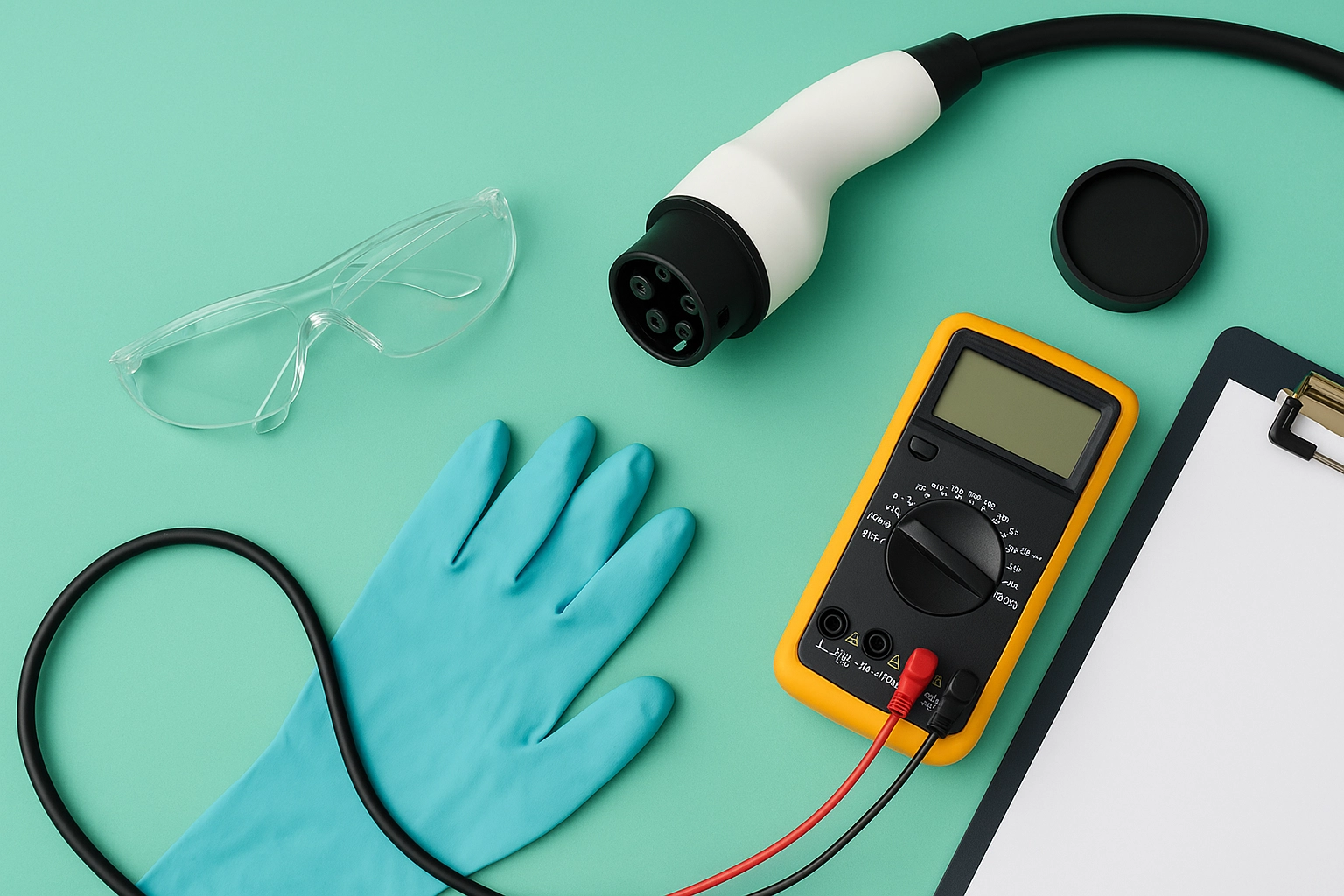IEC 63382 High Voltage EV Charging Equipment Durability Test
The International Electrotechnical Commission (IEC) Standard 63382-1, specifies the test methods for assessing the durability and reliability of high voltage charging equipment used in electric vehicles. This standard ensures that these components can withstand the harsh environmental conditions they will encounter during real-world use.
For automotive manufacturers and suppliers, understanding the long-term performance requirements is critical to maintaining safety standards and ensuring product longevity. IEC 63382-1 tests are designed to simulate various types of stressors such as overvoltage, temperature cycling, mechanical shocks, and vibration. These tests validate that charging equipment remains functional under extreme conditions, thus enhancing the overall safety and reliability of electric vehicle (EV) charging systems.
The testing process involves subjecting high voltage EV chargers to a series of controlled environmental stressors. This includes but is not limited to temperature cycling from -40°C to 85°C, humidity levels up to 93% relative humidity for 96 hours, and exposure to sand and dust environments. Additionally, the equipment must endure mechanical shocks equivalent to those experienced during transportation or installation.
The test parameters are meticulously defined in IEC 63382-1 to ensure consistency across different manufacturers and regions. Compliance with these standards is crucial for achieving international recognition and market access. By adhering to this rigorous testing protocol, manufacturers can demonstrate their commitment to quality assurance and safety compliance, thereby gaining consumer trust.
The results of the durability tests provide valuable insights into potential areas of improvement and help identify any weaknesses in the design or manufacturing process that could lead to premature failure. This information is essential for continuous product development and enhancement efforts aimed at improving overall performance and reliability.
For quality managers, compliance officers, R&D engineers, and procurement professionals involved in the automotive sector, understanding these tests is vital. It enables them to make informed decisions about sourcing components, ensuring regulatory compliance, and fostering innovation within their organizations.
Why Choose This Test
The IEC 63382 High Voltage EV Charging Equipment Durability Test offers several advantages over other testing methodologies. Firstly, it provides a comprehensive evaluation of the charging equipment's ability to withstand real-world conditions, ensuring long-term reliability and safety.
- Ensures compliance with international standards
- Promotes consistent performance across different manufacturers
- Reduces risk of product failure due to environmental factors
- Enhances consumer confidence in the products being offered
- Supports continuous improvement through detailed test data
- Aids in meeting regulatory requirements and obtaining market access
The rigorous nature of this testing ensures that only high-quality, durable equipment passes these stringent criteria. This not only protects consumers from potential hazards but also fosters trust among stakeholders involved in the EV ecosystem.
For automotive companies, choosing this test means investing in robust quality assurance measures that contribute to building a safer and more sustainable future for electric vehicles. By participating in such tests, manufacturers can gain a competitive edge by demonstrating their commitment to innovation and excellence in product design and development.
Quality and Reliability Assurance
The IEC 63382 High Voltage EV Charging Equipment Durability Test plays a crucial role in ensuring the quality and reliability of high voltage charging equipment used in electric vehicles. This section outlines some key aspects that contribute to this assurance.
- Environmental stressors: The test subjects the equipment to various environmental conditions, including temperature cycling, humidity exposure, sand and dust environments, and mechanical shocks.
- Data collection: Comprehensive data is collected during each phase of the testing process. This includes electrical parameters such as current, voltage, power factor, and waveform analysis. Mechanical measurements like displacement, acceleration, and force are also recorded.
- Failure modes identification: By identifying potential failure modes early on in the development stage, manufacturers can address issues before they become critical problems.
- Compliance verification: Ensures that all components meet the specified requirements outlined in IEC 63382-1, thus promoting consistent performance across different manufacturers.
The collected data serves multiple purposes. It helps identify any weaknesses or shortcomings in the design or manufacturing process, allowing for timely corrective actions. Additionally, it provides valuable feedback that can be used to improve future iterations of the product. This iterative approach ensures continuous improvement and enhances overall reliability.
In summary, the IEC 63382 High Voltage EV Charging Equipment Durability Test is an indispensable tool in maintaining high standards of quality and reliability for electric vehicle charging equipment. Its comprehensive nature makes it a trusted method for assessing the durability and safety of these critical components.
International Acceptance and Recognition
The IEC 63382 High Voltage EV Charging Equipment Durability Test is widely accepted and recognized by regulatory bodies, industry associations, and international standards organizations around the world. Its global recognition stems from its alignment with internationally agreed-upon specifications.
Regulatory authorities such as the National Highway Traffic Safety Administration (NHTSA) in the United States and the European Union's New Regulatory Framework for Electric Vehicles recognize this test method. Compliance with these standards is essential for ensuring that electric vehicle charging equipment meets stringent safety requirements set forth by global regulators.
Industry associations like SAE International also recommend or mandate adherence to IEC 63382-1 as part of their best practices guidelines. By following these recommendations, manufacturers can ensure they are meeting the expectations of both customers and partners alike.
The widespread adoption of this standard reflects its importance in promoting a harmonized approach towards testing electric vehicle charging equipment worldwide. As more countries adopt similar regulations, adherence to IEC 63382-1 becomes increasingly important for businesses operating across borders.
In conclusion, the international acceptance and recognition accorded to the IEC 63382 High Voltage EV Charging Equipment Durability Test underscore its significance in maintaining high standards of quality and reliability. For automotive companies aiming to expand into new markets or meet evolving regulatory requirements, compliance with this standard is essential.





